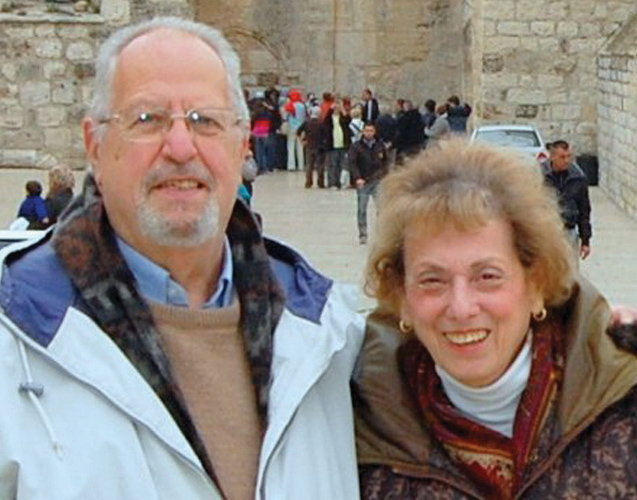
Former K.I. members and KC natives Sybil and Barry Kaplan moved to Israel in 2008. Six years ago they decided to move closer to their synagogue to the upscale neighborhood of Arnona, which as of this week is the home of the new U.S. Embassy in Israel.
Like others in their neighborhood, they wonder how having the U.S. Embassy a 10-minute walk from their home will impact them.
“From a purely political view, we are excited about this historic step. We waited too many years for this to happen,” Sybil Kaplan said. “Seeing the banners and posters hanging in our neighborhood with American and Israeli flags on them is very thrilling.”
As for the traffic their neighbors fear, Kaplan said they are told “additional roads will be built near the compound and surrounding area, and a street and a roundabout will be named or President Trump.”
“Consulate and embassy people are not allowed to ride local buses, so the biggest change we can think of is traffic is bound to be heavier,” she added.
As leader of the weekly English-language walks in Machaneh Yehudah, the Jewish produce market, Kaplan hopes more people in the neighborhood will help her business grow.
“I have had individuals from the U.S. Consulate and organized groups come on my walk and they are lovely people,” she noted.
Kaplan also wonders what will happen to property values in the neighborhood.
“Some say property will go up, but that would depend whether the workers want to live near the embassy. The consulate has been located in our neighborhood and most of the consulate workers I have met did not live in our neighborhood,” she said.
Kaplan has always enjoyed sharing Israeli facts and history with others, and she looks forward to sharing what is special about the Arnona neighborhood to friends and visitors. For instance, she said that some believe “Arnona is one of the highest points in Jerusalem, 800 meters above sea level. It received its name because of its view of the biblical River Arnon.”
From Arnona, Kaplan pointed out, one can see the Judean Desert, the Dead Sea, and, as mentioned, the River Arnon.
Continuing the history lesson, Kaplan will tell you Arnona was founded in 1931 on land owned by the Keren HaEzra Company according to plans created by the Bauhaus architect, Richard Kaufmann, who also designed Rechavia, Beit Hakerem and Bayit Vegan.
During Israel’s War of Independence in 1948, Arnona was on the front line, and Jews living in Arnona fled the area as the neighborhood was occupied by Jordanian and Egyptian troops. Jewish forces of the Haganah and Palmach retook the area and when a ceasefire agreement was reached with Jordan in 1949, the cease-fire line was at the eastern border of Arnona. The neighborhood was only to regain its original borders nearly two decades later, following the 1967 Six Day War.
Since then, the neighborhood gradually became a southern suburb of Jerusalem, separated from the main city by the Arab neighborhoods of Baka and Talbieh and the German Colony area.
During the 1990s a widespread building trend led to a rise in property value and made Arnona into a relatively upscale neighborhood.


